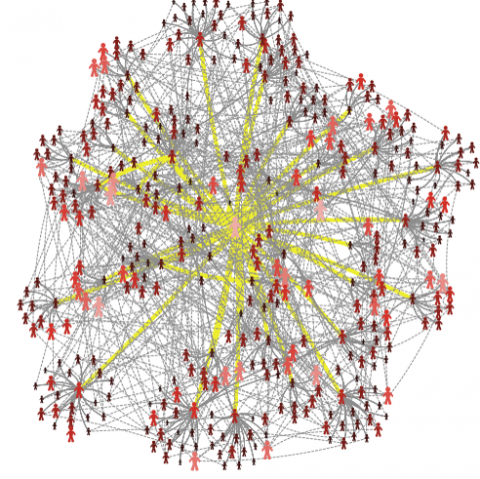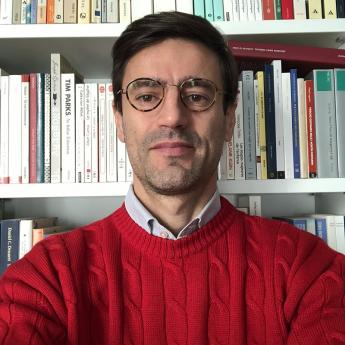
Interview with Gianluca Manzo, Computational & Analytical Sociologist
The Sorbonne Center for Artificial Intelligence (SCAI) has been holding a webinar series titled ‘AI in Action’ since February 2021. Once a month, experts gather on zoom to explore the diverse application fields of artificial intelligence, focusing on a specific theme each time.

Gianluca Manzo, a Computational & Analytical Sociologist at CNRS, will be speaking at the seventh session of ‘AI in Action’ on Tuesday 29 June: Simulating social phenomena through agent-based computational models. Most recently, he used agent-based computational models to investigate Covid-19 high-contact hubs.
Here, he provides insight into his research process, and outlines the need for a more explanatory approach to AI.
You work with a computer simulation technique called agent-based computational models. Could you explain how these work? How do you create artificial societies using this technique?
In principle, the research path is straightforward. First, I identify some macroscopic patterns that I want to explain, say educational inequalities across socio-economic groups. Second, I formulate theoretical hypotheses on what behavior may have generated the patterns (the decision part of the model) and how the behavior of one actor affected that of another actor (the interdependence part of the model).
Usually I also define a specific way in which the interactions among actors are organized. Third, I translate these theoretical hypotheses within a computer program using programming languages that enable the modeling of each individual entity of interest (i.e. the virtual agents).
Finally, I simulate the model, meaning that I repeat the behavioral rules I gave my virtual agents, over and over again. I let them interact over time on the simulated structure of interactions, and I observe what macroscopic patterns emerge over time.
What is the most challenging aspect of this research?
Agent-based computational models can be designed with different goals in mind. One possibility is to use the method to perform theoretical exploration. Another possibility is to use the method to design virtual societies that are as realistic as possible. These two approaches are of course compatible with each other. I tend to use agent-based models in this second way.
From this perspective, I would say that the most challenging part of the research is to find empirical data that can be exploited to ground the simulation in observations from the real world. For instance, how are social interactions that are relevant for the phenomenon under scrutiny arranged in the real world, and how do they evolve in real time? It is not always simple to get the relevant data to answer these questions.
And what results has it generated so far? What hypotheses have you explored?
So far, I have applied agent-based computational models to study social mechanisms underlying social phenomena as diverse as educational inequalities, feelings of well-being, reputational hierarchies, the diffusion of innovations, and the propagation of infectious diseases. Each model focused on different mechanisms but a common feature concerned the interdependence among individuals’ choices. In every model this interdependence arises from the fact that actors are embedded in complex networks of social interactions.
The most general result of my work is that the structure and the properties of those networks are highly consequential for the outcomes that we observe at the macroscopic scale.
Below, a graphic demonstrating one component of a simulated network Manzo used for modeling COVID-19 super-spreaders.

You’re about to participate in SCAI’s ‘AI in Action’ webinar series on the diverse application fields of AI. What do you hope to communicate to people about your research, and about the implications of AI in general?
AI is a highly complex and diverse research field. My sense is that the current trend is to give priority to applications of AI where various algorithmic techniques are used to describe patterns and solve problems in a more or less automatized way.
AI is essentially used to describe and predict. Agent-based computational models are more related to a sub-field of AI called distributed artificial intelligence, where the goal is to solve a task though the coordination of a variety of individual components. What I want to stress is that agent-based computational models can be used to solve explanatory tasks. The model can identity fine-grained mechanisms that can be used to intervene into social dynamics. Description and predictions are important goals but, if we do not also have models to explain what we observe, then we end up with black-box models that ultimately fail to be really useful. The way I propose to use agent-based computational models emphasizes the need for a more explanatory approach to AI.
Visit SCAI's website for more information on Gianluca Manzo's 'AI in Action' event on June 29th.

